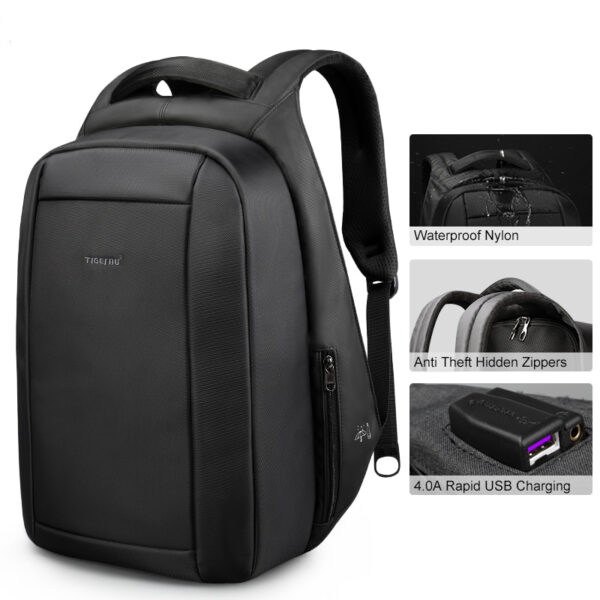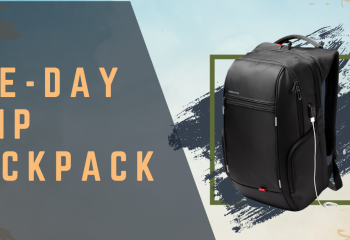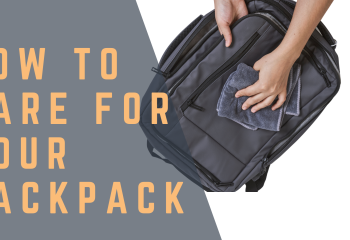The Unsung Hero of Every Adventure
Imagine this: you’re trekking through a sudden downpour, navigating a misty trail, or simply caught in an unexpected city shower. What’s the one thing that can turn a minor inconvenience into a major headache? A soaked backpack. Inside, your electronics, important documents, or dry clothes become vulnerable, potentially ruining your day, your gear, or even your trip. This is where the unsung hero of outdoor and travel gear steps in: the water-repellent backpack.
But what exactly makes a backpack “water-repellent,” and how is it different from “waterproof”? More importantly, why should this seemingly minor feature be a non-negotiable for your next pack? This article will dive into the fascinating science behind stay-dry technology, explore the various methods manufacturers use, and explain why investing in a water-repellent backpack is a smart move for every adventurer, commuter, and digital nomad.
Water-Repellent vs. Waterproof: A Crucial Distinction
Before we delve into the “how,” let’s clarify the difference between two often-confused terms:
Water Repellent USB Backpack
Unisex Water Repellent USB Backpack with durable nylon build, multiple interior pockets, and a lightweight design. Perfect for work, travel, and tech gear.
- Water-Repellent: This means the fabric has been treated to resist water penetration. Water will bead up and roll off the surface, but under prolonged exposure, heavy pressure, or if seams aren’t sealed, water can eventually seep through. Most high-quality backpacks are water-repellent.
- Waterproof: This implies a complete barrier against water. A truly waterproof item will prevent any water from entering, even when submerged. This typically involves specialized materials (like PVC or TPU-coated fabrics) and fully sealed seams (welded or taped). While excellent for extreme conditions, waterproof materials are often less breathable, heavier, and more rigid, making them less common for everyday or multi-purpose backpacks.
For the vast majority of users, a well-designed water-repellent backpack offers the perfect balance of protection, breathability, and comfort.
The Science Behind the Bead: How Water Repellency Works
The magic of water repellency lies in manipulating surface tension. Fabrics are treated to become hydrophobic, meaning they “fear” water. Here are the primary methods:
- Durable Water Repellent (DWR) Coatings: This is the most common method. DWR is a polymer coating applied to the outer fabric of a backpack. When water hits a DWR-treated surface, it forms spherical beads that roll off, rather than soaking into the fabric. Think of it like tiny, invisible spikes on the fabric fibers that prevent water from spreading and wetting the surface.
- How it works: The DWR coating reduces the surface tension of the fabric, making it lower than the surface tension of water. This causes water molecules to stick to themselves rather than to the fabric, forming beads.
- Common DWR Chemicals: Historically, DWRs used per- and polyfluoroalkyl substances (PFAS/PFCs), known for their effectiveness but also environmental concerns. Newer, more eco-friendly DWRs are now being developed and used, often referred to as C0, C6, or C8 chemistries (with C0 being PFC-free).
- Fabric Weave and Material Properties:
- Tightly Woven Fabrics: Materials like high-denier nylon or polyester, when woven very tightly, naturally offer some resistance to water penetration. The small gaps between threads make it harder for water droplets to pass through.
- Coated Fabrics: Beyond DWR, many backpack fabrics have an additional coating applied to the inside surface, often made of polyurethane (PU) or silicone. This internal coating acts as an extra barrier, preventing water that might get past the outer DWR from reaching the contents. This is a crucial layer for true water resistance.
- Water-Resistant Zippers: Standard zippers are often weak points for water entry. Water-repellent backpacks frequently incorporate:
- Reverse Coil Zippers: These zippers have the coils on the inside, presenting a smoother, less permeable surface to the outside.
- Coated Zippers (AquaGuard/YKK Water-Resistant): These zippers feature a polyurethane film laminated onto the zipper tape, effectively sealing the gaps between the teeth when closed. While not fully waterproof, they significantly enhance water resistance.
- Seam Sealing: Even with the best water-repellent fabric, seams are vulnerable. Water can seep through the needle holes where the fabric is stitched. High-quality water-repellent backpacks often feature:
- Taped Seams: A waterproof tape is applied over the seams on the inside of the backpack, sealing the stitching holes.
- Welded Seams: In some advanced designs, fabric panels are fused together using heat or ultrasonic waves, creating a seamless, impenetrable bond without needle holes.
Why You Need a Water-Repellent Backpack
Beyond the obvious benefit of keeping your stuff dry, here’s why water repellency is a must-have feature:
- Protection for Electronics: Laptops, tablets, cameras, and smartphones are expensive and highly susceptible to water damage. A water-repellent backpack provides a vital first line of defense against unexpected rain or spills.
- Safeguarding Important Documents: Passports, travel itineraries, work papers, or school assignments can be ruined by moisture. Keep them pristine and legible, no matter the weather.
- Preserving Clothing and Gear: No one wants to arrive at their destination with damp clothes or a wet sleeping bag. Water repellency ensures your essentials stay dry and ready for use.
- Enhanced Durability and Longevity: When fabrics absorb water, they become heavier and can be more prone to wear and tear, and even mildew. Water-repellent coatings help maintain the integrity of the fabric, extending the life of your backpack.
- Comfort in Inclement Weather: A soaked backpack is not only a risk to your belongings but also adds significant weight and can feel uncomfortable against your back. Water repellency helps keep the pack lighter and more comfortable in damp conditions.
- Versatility for Any Environment: Whether you’re commuting to work, exploring a new city, hiking a trail, or traveling internationally, unpredictable weather is a constant. A water-repellent backpack ensures you’re prepared for anything.
- Peace of Mind: Knowing your valuables are protected allows you to focus on your journey, work, or adventure without constant worry about the weather.
What to Look For When Buying a Water-Repellent Backpack
When choosing your next PackParade companion, keep these features in mind to ensure optimal water repellency:
- DWR Coating: Look for mentions of DWR on the product specifications. Inquire about the type of DWR (e.g., PFC-free options for environmental considerations).
- Internal PU or Silicone Coating: This inner layer is critical for preventing water from soaking through the fabric itself.
- Water-Resistant Zippers: Check for reverse coil or coated zippers, especially on main compartments and external pockets.
- Seam Sealing: Taped or welded seams are a strong indicator of a backpack designed to keep water out.
- Fabric Denier: Higher denier (e.g., 500D, 1000D Cordura, ballistic nylon) generally indicates a more robust and inherently water-resistant fabric.
- Roll-Top Closures: For maximum protection, especially in bags designed for more extreme conditions, a roll-top closure can offer a nearly waterproof seal for the main compartment.
- Internal Organization: While not directly related to water repellency, internal pockets and sleeves made of water-resistant materials can add an extra layer of protection for sensitive items.
Maintaining Your Backpack’s Water Repellency
DWR coatings aren’t permanent. Over time, dirt, oils, and abrasion can degrade their effectiveness. Here’s how to keep your backpack performing its best:
- Clean Regularly: Gently clean your backpack with mild soap and water to remove dirt that can inhibit DWR.
- Reactivate DWR: Often, the DWR can be “reactivated” by tumble drying the backpack on a low heat setting (check manufacturer instructions first!). The heat helps to re-bond the DWR polymers.
- Reapply DWR Treatment: When beading stops, it’s time to reapply. There are many spray-on or wash-in DWR products available from outdoor gear retailers.
Conclusion: Invest in Protection, Embrace the Journey
A water-repellent backpack is more than just a bag; it’s a shield for your essentials, a guardian of your peace of mind, and an enabler of spontaneous adventures. Understanding the science behind its stay-dry capabilities empowers you to make an informed choice that will serve you well, whether you’re navigating a bustling city, exploring remote landscapes, or simply commuting through a rainy day.
At PackParade, we prioritize thoughtful design and robust materials to ensure our backpacks stand up to the elements, keeping your gear safe and dry so you can focus on what truly matters: the journey ahead. Explore our collection today and experience the difference of true water repellency.











Add comment